Board layout, power supply and components
The board differs considerably from those of the GeForce cards, which is not only due to the additional connections. Despite the moderate 125 watts, Nvidia relies on a stable 6+2 phase design as the maximum power target. The six phases for the GPU are provided by a uP9512R, which controls the five brand new power stages from Alpha & Omega, which unfortunately are not really documented. The coils with their 220 mH are the usual average product.
For memory, Nvidia uses Samsung's GDDR6 modules with the K4Z80325BC-HC14, but they are not driven at the maximum possible clock and thus remain significantly cooler. These eight 1GB modules are powered by two separate phases, which a uP1660 provides and for whose voltage converters a dual-N-channel MOSFET from UBIQ is used with the M3816N. For the 470 mH coils, this already applies to the just written.
Two shunts in the two 12V rails ensure that the power supply does not provide more power than Nvidia has released for this design. There are further secrets on the very narrowly stocked, because quite small board, now not to be discovered. That's why I'm cutting this part off a little bit this time.
Radiator construction
The design itself is not new, although some details differ from the older single-slot cards. If you remove the light metal cover of the front, you can see the radial fan, which can achieve a maximum of 5000 rpm, but does not have to exhaust it. The airflow is pressed through the cooling chambers and exits both at the slot bezel and via the openings in the cover and at the top of the card. However, it is no longer a real DHE card (Direct Heat Exhaust).
The cooling block is screwed directly to the board and can be taken out separately. Behind the copper heatsink are two flat heatpipes, which release the waste heat to the lamella chamber cooler. There would simply not have been room for a much thicker vapor chamber.
The memory, as well as the voltage converters and many other components are cooled over the large, cast and blackened aluminum block of the assembly frame. The 27 thermal pads connect the components in question thermally to this block, which for me represents a lonely record.
- 1 - Einführung und Datenblatt
- 2 - Tear Down: Platine und Kühler im Detail
- 3 - Visualize 2019, Arion, Luxmark
- 4 - Solidworks 2017
- 5 - Autodesk AutoCAD 2018 , Maya 2017 und 3ds Max 2015
- 6 - Creo 3 (M190)
- 7 - SPECviewperf 13
- 8 - GDI und Treiberdurchsatz
- 9 - Leistungsaufnahme, Lastspitzen und Netzteilempfehlung
- 10 - Takt und Temperaturen
- 11 - Lüfter und Lautstärke
- 12 - Zusammenfassung und Fazit















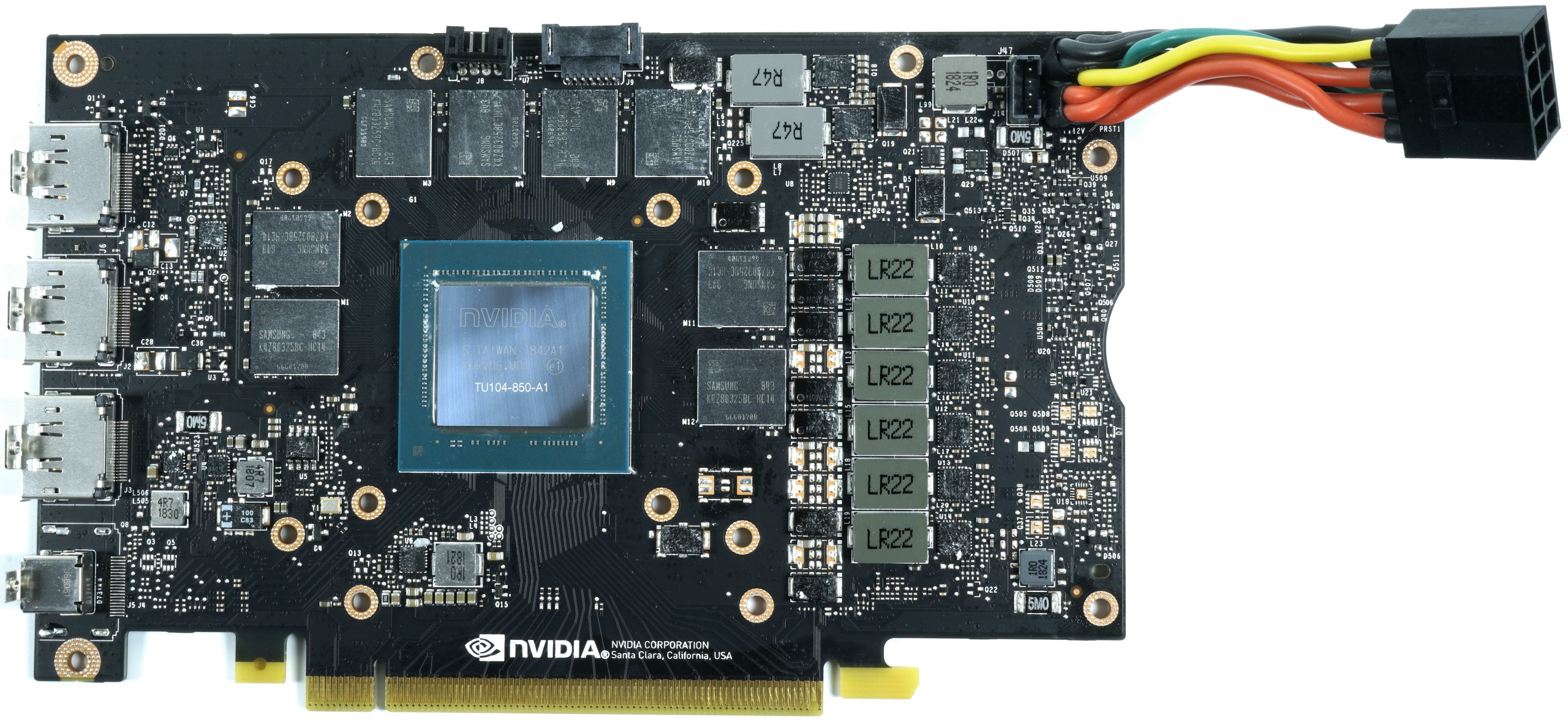
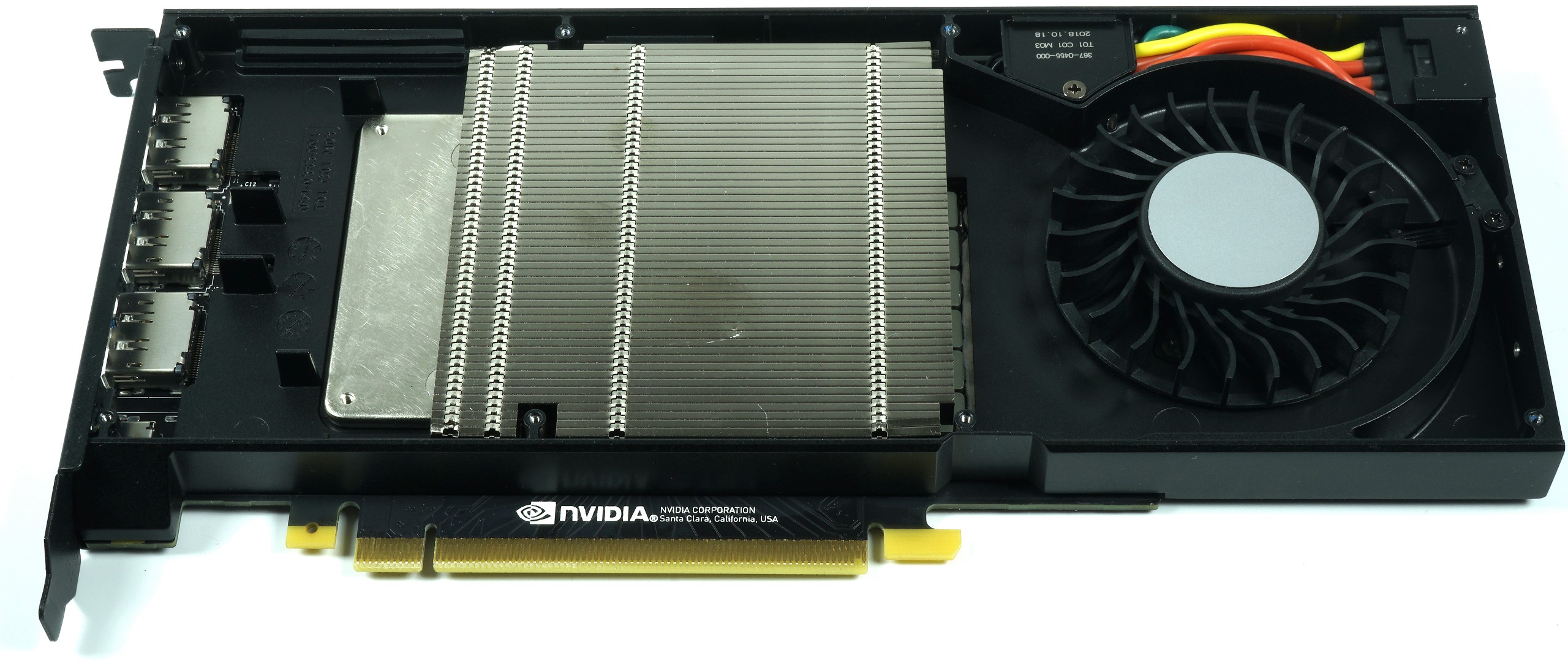
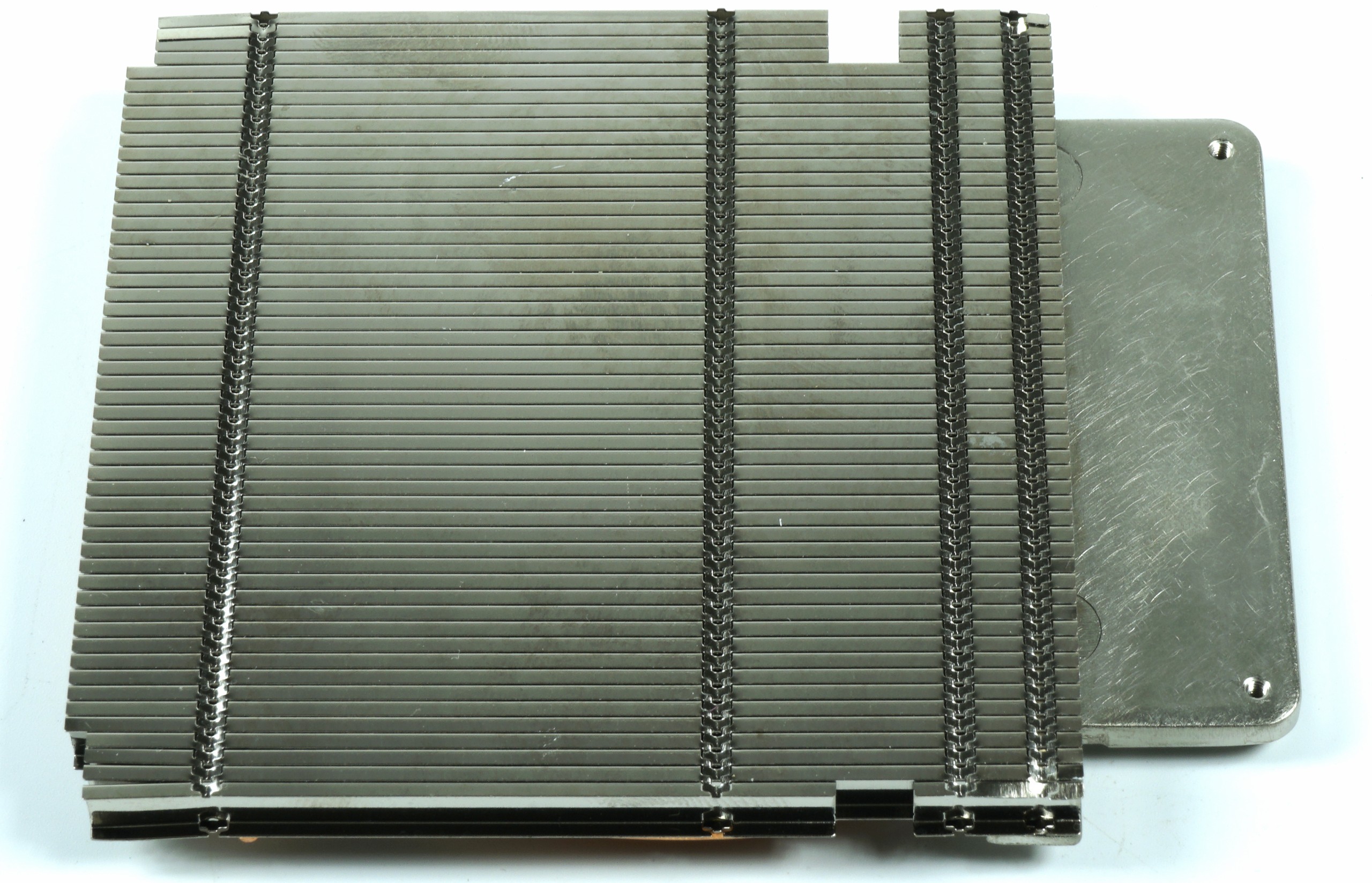
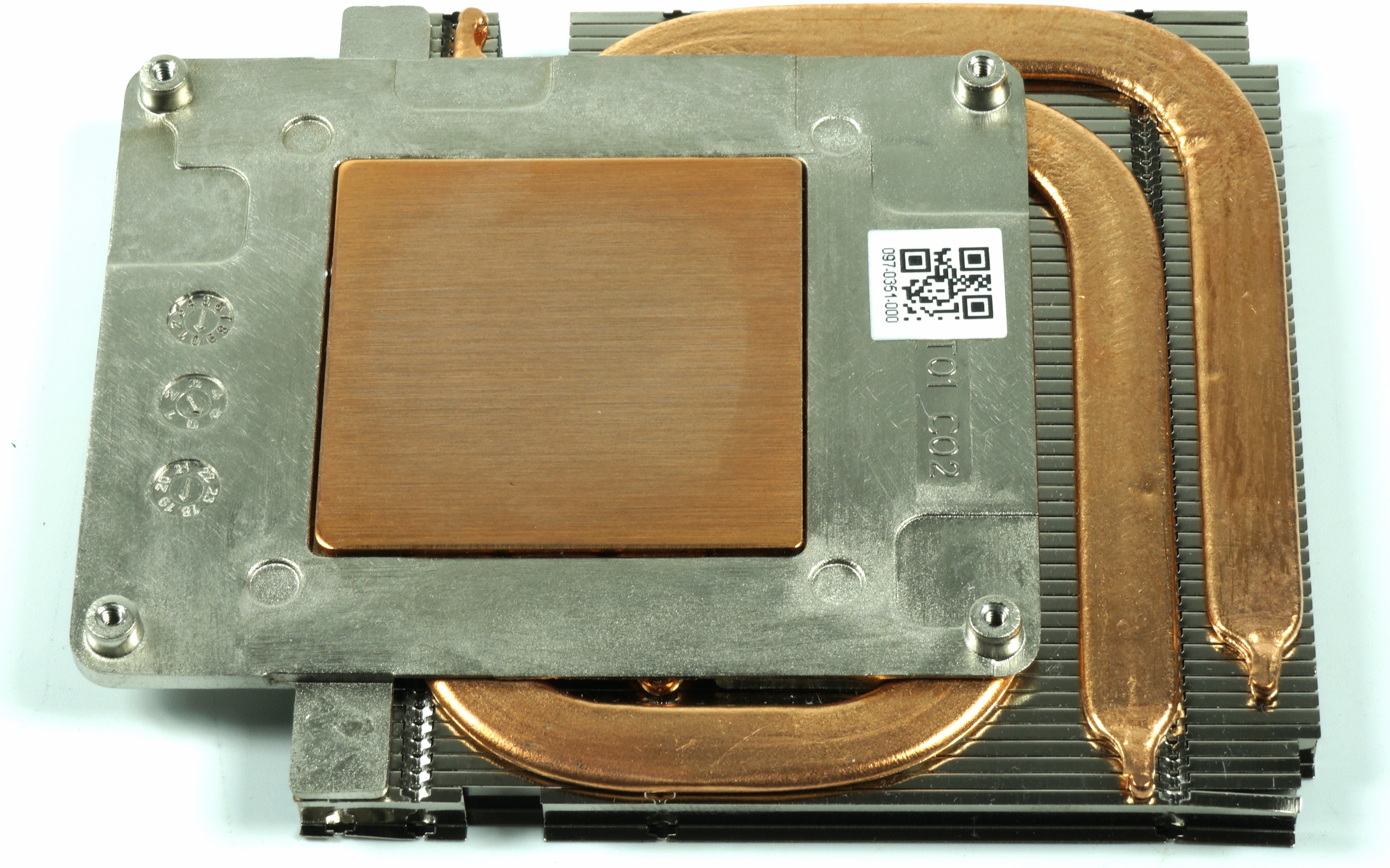
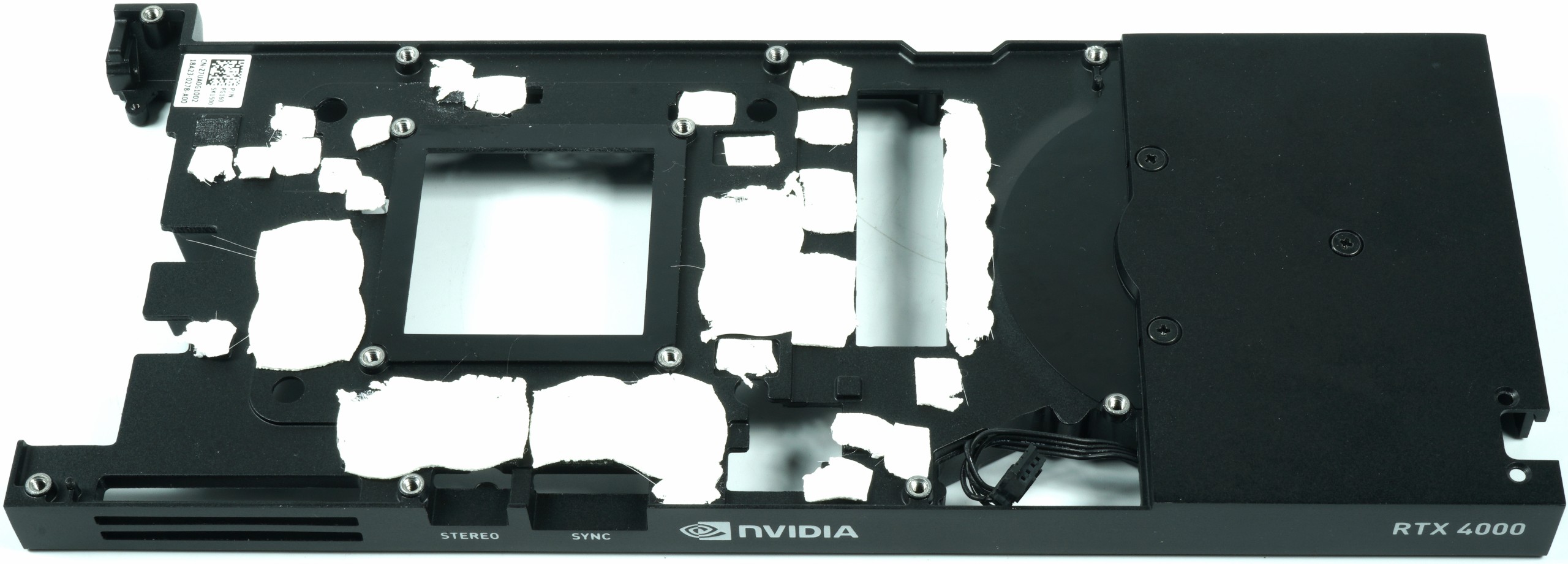

















Kommentieren